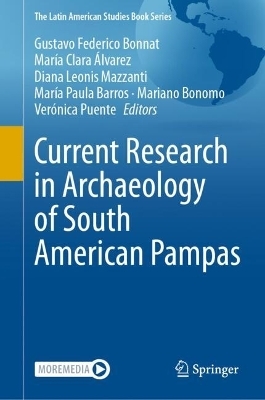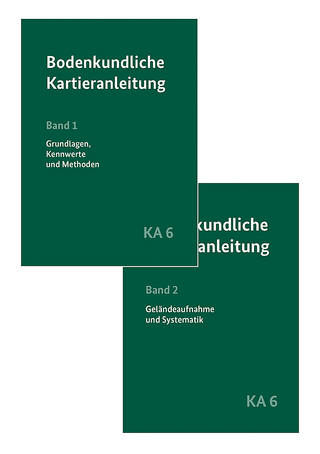
Current Research in Archaeology of South American Pampas
Springer International Publishing (Verlag)
978-3-031-55193-2 (ISBN)
This volume includes a selection of papers derived from the IX Conference of the Pampas region of Argentina, held virtually in 2021 in Mar del Plata (Buenos Aires, Argentina) and organized by the National University of Mar del Plata. Located in the southern cone of South America, the Pampas are vast plain grasslands that range across central Argentina and are one of the largest prairies of the world. The early traces of humans date back to ca. 12,200 14C years BP. From the Late Pleistocene up to the Spanish Conquest in the sixteenth century, hunter-gatherer groups occupied the Pampas. Archaeological research in the region has been focused on fascinating topics such as the early peopling, the mobility circuits in the past, the interaction between indigenous and colonial societies, and the perception of this complex past by the modern Pampean society, mainly integrated by European immigrants and indigenous descendants. This book gathers these themes and includes a selection of a conference of one of the keynote speakers and 18 papers that represent diverse topics on the current Pampean research. The book is structured in two main axes: 1) prehispanic studies using different lines of evidence; 2) historical archaeology and cultural heritage.
Gustavo Federico Bonnat is an Assistant Researcher at the National Council for Scientific and Technical Research (CONICET); and a member of the Laboratorio de Arqueologia Regional Bonaerense and the Institute of Humanities and Social Sciences (INHUS). He is also an associate professor in the history departament at the Facultad de Humanidades, Universidad Nacional de Mar del Plata, Argentina. Throughout of his career, he has focused on studying the lithic technology of early hunter-gatherer groups in the Pampas region (ca. 10,000 years BP) and obtained his PhD from the Universidad Nacional del Centro de la Provincia de Buenos Aires. Additionally, he has experience in studying lithic technology during the Aurignacian period in northwest Italy and conducting pXRF analysis on obsidian archaeological lithic assemblages from Papua New Guinea.
Chapter 1: The Salado River Wetlands (Buenos Aires Province, Argentina): An Archaeological Perspective.- Chapter 2: New Isotopic Analysis of the Los Tres Cerros 1 And Cerro De Las Pajas Blancas 1 Archaeological Sites (The Paraná River Delta, Argentina).- Chapter 3: Life at the Shallow Lakes: Bioarchaeological Record of the Northern Pampean Shallow Lake Environment. Chapter 4.- Paleodemography of Late Holocene Hunter-Gatherers in the Pampa-Patagonia Transition: Approaches from the Preliminary Analysis of the Médano Petroquímica Site, La Pampa Province, Argentina. Chapter 5.- 20 Years Is Nothing: Revisiting Tapera Moreira Archaeological Locality, Province of La Pampa, Argentina. Chapter 6.- Lithic Procurement, Mobility and Social Interaction in Early Hunter-Gatherer Societies ( 12,000 Cal. Yr BP), in the Humid Pampas Sub-Region, Buenos Aires, Argentina. Chapter 7.- Lithic Technology in the Semi-Arid Center of Argentina: Use of Internodal Spaces among Hunter-Gatherers in the Late Holocene. Chapter 8.- Evidence of Social Interaction in the Pampas: The Case Study of Hangar Site (Province of Buenos Aires, Argentina). Chapter 9.- Technology and Use of Lithic Raw Materials from the Delta of the Paraná River and the Interior of the Province of Entre Ríos, Argentina: Preliminary Results of the Application of Micro-Wear Analysis.- Chapter 10.- Between Shell Layers: Processes Involved in the Formation of Don Enrique Archaeological Site (Punta Indio, Buenos Aires Province, Argentina).- Chapter 11: The Peri-Urban Concept in Historical Archaeology: An Approach from the 19th Century Southern Frontier of Argentina.- Chapter 12: Challenges in the Management and Research of Cultural Heritage: The Patrimonialization of The EB 1789 Canyon From The XVIII Century in San Antonio De Areco, Province of Buenos Aires, Argentina.- Chapter 13: The Incorporation of the Cultural Landscape as a Heritage Category in South American Legislation: New Perspectives for the Protection of Pampean Heritage Sites.- Chapter 14: Archaeological Impact Studies: A Reflection on an Experience in the Salado River, Buenos Aires Province, Argentina.- Chapter 15: Archaeological Heritage Management of Baradero's Historical Area (Buenos Aires Province): Salvage and Socialisation for the Public Use.
| Erscheinungsdatum | 17.05.2024 |
|---|---|
| Reihe/Serie | The Latin American Studies Book Series |
| Zusatzinfo | XXII, 427 p. 61 illus., 49 illus. in color. |
| Verlagsort | Cham |
| Sprache | englisch |
| Maße | 155 x 235 mm |
| Themenwelt | Naturwissenschaften ► Geowissenschaften ► Geografie / Kartografie |
| Schlagworte | Cultural Heritage Management • Grassland ecosystem • Historical Archaeology • interdisciplinary research • Prehispanic archaeology |
| ISBN-10 | 3-031-55193-1 / 3031551931 |
| ISBN-13 | 978-3-031-55193-2 / 9783031551932 |
| Zustand | Neuware |
| Haben Sie eine Frage zum Produkt? |
aus dem Bereich


